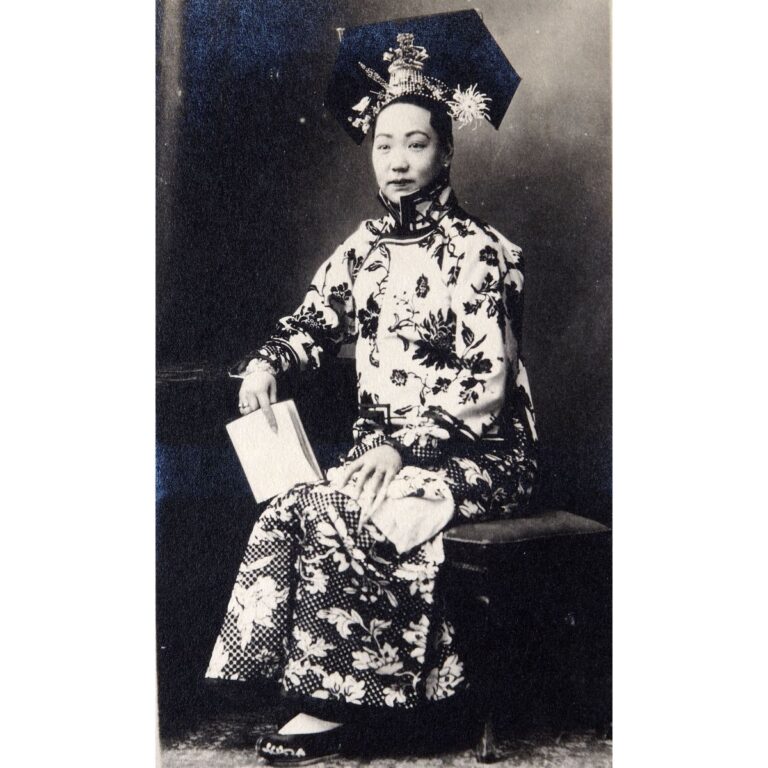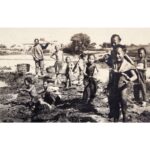Photography Manchu Woman with a Book
A black-and-white photograph, studio portrait of an upper-class Manchu woman. She is wearing the traditional garment changpao 長袍, the precursor of the more famous qipao 旗袍, which was intended for formal occasions. She is also wearing a magua 襟马褂 breastplate with a distinctive huling 護領 protective collar. The summer garment is made of sophisticated embroidery with delicate floral patterns. Chrysanthemums stand out in particular. They are also found on the typical erbatou 二把頭 hairstyle by which we recognise Manchu women. The hairstyle consists of two figs attached to each side of the head and reinforced with an additional wire frame and extensions. It is adorned with various decorations – from flowers to jewellery. The Manchu woman wears gold jewellery on her left toes. In the photo, thimbles in the form of a long pointed nail are clearly visible. With this shape, which prevented any practical use of the fingers, women showed that they did not need to do any (manual) ... more
A black-and-white photograph, studio portrait of an upper-class Manchu woman. She is wearing the traditional garment changpao 長袍, the precursor of the more famous qipao 旗袍, which was intended for formal occasions. She is also wearing a magua 襟马褂 breastplate with a distinctive huling 護領 protective collar. The summer garment is made of sophisticated embroidery with delicate floral patterns. Chrysanthemums stand out in particular. They are also found on the typical erbatou 二把頭 hairstyle by which we recognise Manchu women. The hairstyle consists of two figs attached to each side of the head and reinforced with an additional wire frame and extensions. It is adorned with various decorations – from flowers to jewellery. The Manchu woman wears gold jewellery on her left toes. In the photo, thimbles in the form of a long pointed nail are clearly visible. With this shape, which prevented any practical use of the fingers, women showed that they did not need to do any (manual) work. The Manchu woman wears lipstick. This form of lip makeup, emphasising the entire upper lip and the middle part of the lower lip, was one of two fashionable options for Qing Dynasty women.
Portrait photography became the most popular genre in China after photography “conquered” the country. After only a few years, photography supplanted portraiture wherever Westerners were present, and later spread to other places. The reason is simple: portraiture was an important tradition in both China and the West even before photography. It was one of the few areas of interest common to both cultures.
The photograph is the 159th of 449 photographs of Beijing and its surroundings in the album of Ivan Skušek Jr., purchased during his stay in Beijing (1914–1920). In the handwritten inventory of the album, the photograph is referred to as Mandschufrau im Sommerkleid.
It also appears in other photo collections. (DZ, MV)





































Do you have a comment or additional information about the subject?